[ad_1]
A massive tomato fight. Burning enormous, elaborate sculptures that take a year to build. Jumping over newborn babies. The best Spanish festivals are like nothing you’ve ever experienced, and make worthy additions to any traveler’s bucket list.
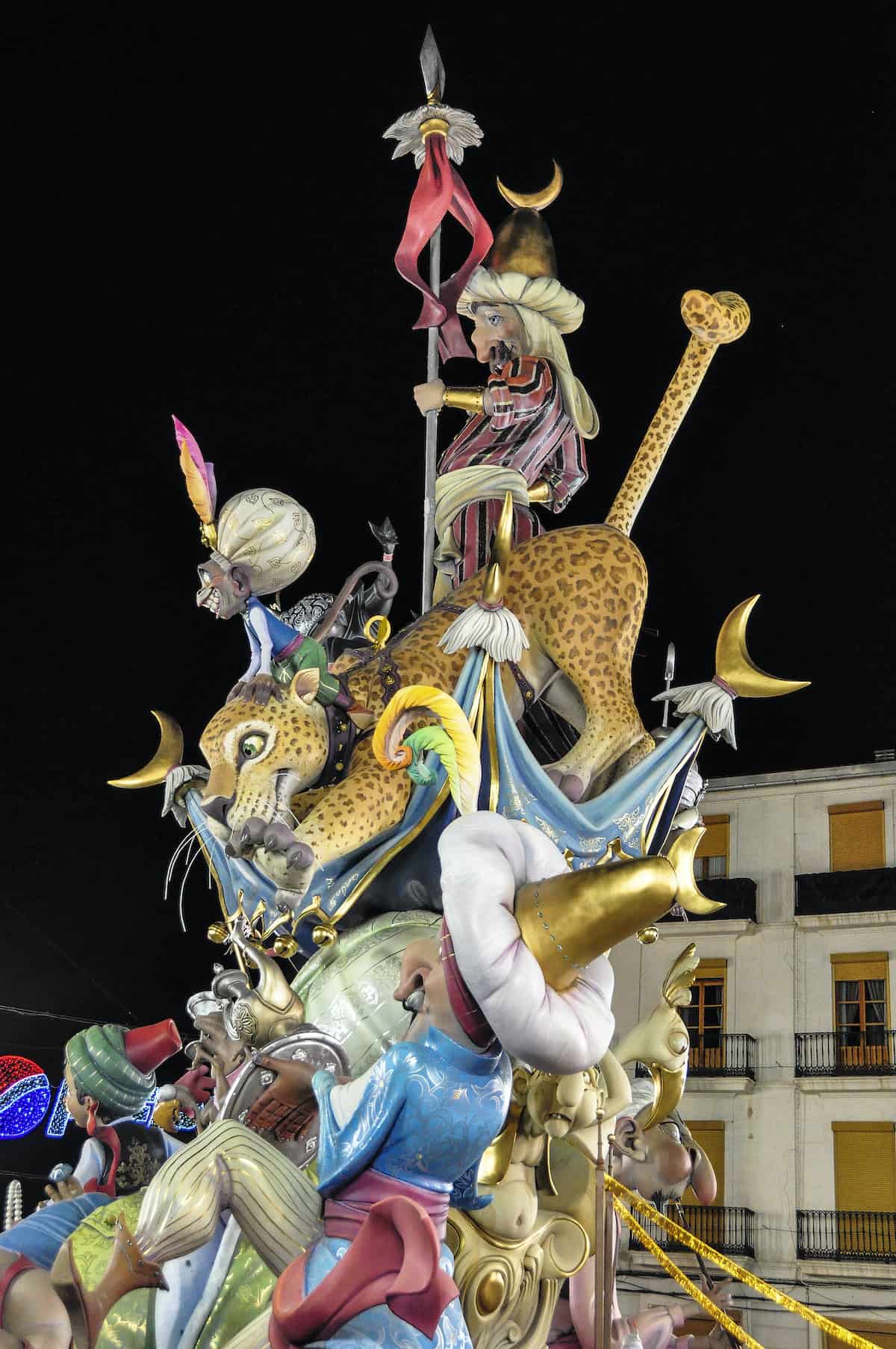
Spain’s reputation as a passionate, fun-loving destination is well deserved. From close-knit celebrations in small villages to massive affairs that draw visitors from across the world, you’re almost guaranteed to find a fiesta happening somewhere in Spain every week of the year.
The best part: there really is something for everyone when it comes to Spanish festivals. Whether you’re up for a massive food fight, prefer something more low-key like watching solemn processions, or anything in between, there’s a traditional Spanish festival that you’ll love!
27 Unique Festivals in Spain
Although there’s a seemingly infinite number of celebrations across the country and throughout the year, I’ve tried to narrow down the list. Here are 27 of the most exciting, eccentric, and all-around impressive festivals in Spain.
1. La Tomatina
La Tomatina has earned its title as one of the craziest Spanish festivals. Once a year at the end of August, thousands gather in the small Valencian town of Buñol to throw tomatoes at one another in the name of tradition and fun!
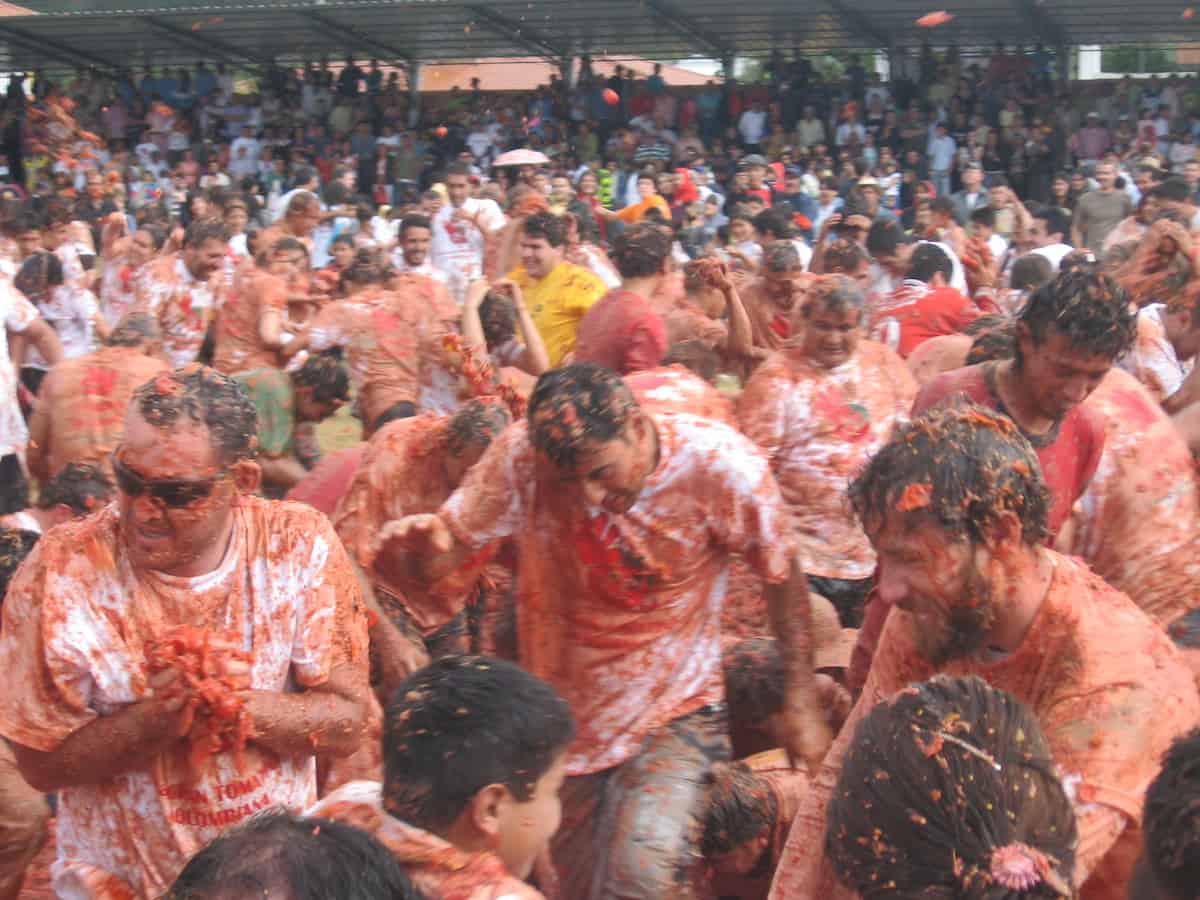
2. Las Fallas
Visit the city of Valencia in mid-March to experience its biggest fiesta, Las Fallas. For four days, the city transforms into a carnival of huge paper-mâché figurines, performances, fireworks, and bonfires.
This famous Spanish festival finishes with a display of huge bonfires that burn up all the figurines in a spectacle you have to see to believe.
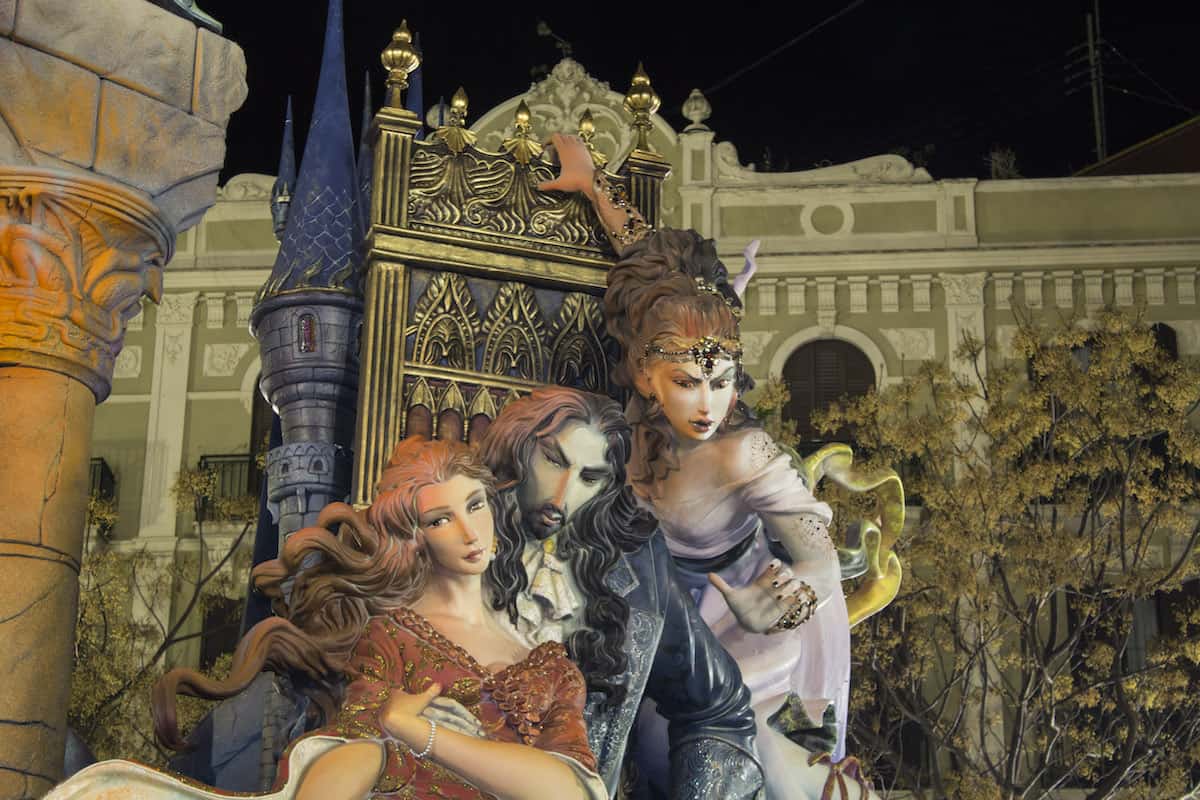
3. Carnival
Parades and performances fill the air with the buzz of celebration in February or early March, when huge open-air Carnaval parties take over the streets of Spain.
Tenerife, Cadiz, and Sitges host the most famous Carnival celebrations in Spain. Make your way to one of these towns, get dressed up, and prepare to dance through the streets all night long.
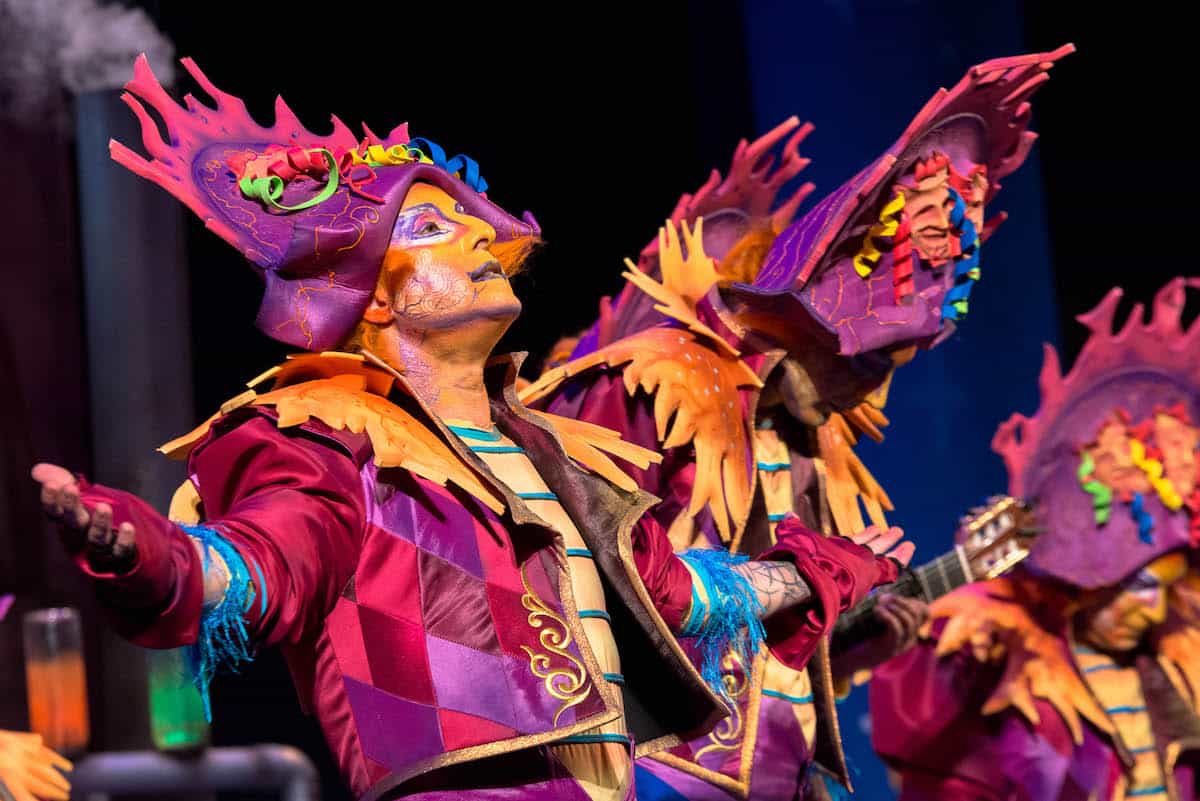
4. La Feria de Abril
One of the most popular festivals in Seville (and all of Spain), the Feria de Abril (April Fair) begins on a Monday night as thousands of light bulbs strung through the fairgrounds light up. This kicks off the weeklong celebration that includes dancing, singing, and delicious food and wine.
Many female attendees wear traditional Andalusian trajes de gitana (flamenco dresses), making the event even more authentic. This is one Spanish festival you truly can’t miss, so save the date (it kicks off two weeks after Easter) and experience it for yourself.

5. San Fermín
Memorialized for eternity in Ernest Hemingway’s The Sun Also Rises and Death in the Afternoon, San Fermín is perhaps the most famous Spanish festival known throughout the world.
The legendary running of the bulls makes this one of the craziest and most unforgettable Spanish festivals. But if you head to Pamplona for the festivities, be sure to check out the other events, including live music, a parade of giants, and traditional dance performances.
6. Día de los Reyes Magos
Unlike Americans, Spaniards exchange Christmas gifts on Three Kings Day on January 6th. This day celebrates and commemorates the arrival of the Three Wise Men to Bethlehem, bearing gifts for the baby Jesus.
On the night of the 5th, almost every Spanish town organizes cabalgatas, or parades, in which the Three Kings walk or ride through the streets and throw candy to children. The next morning, kids open the presents that the kings brought them the night before.
This Spanish festival also features a delicious sweet: roscón de reyes, the Spanish version of king cake.
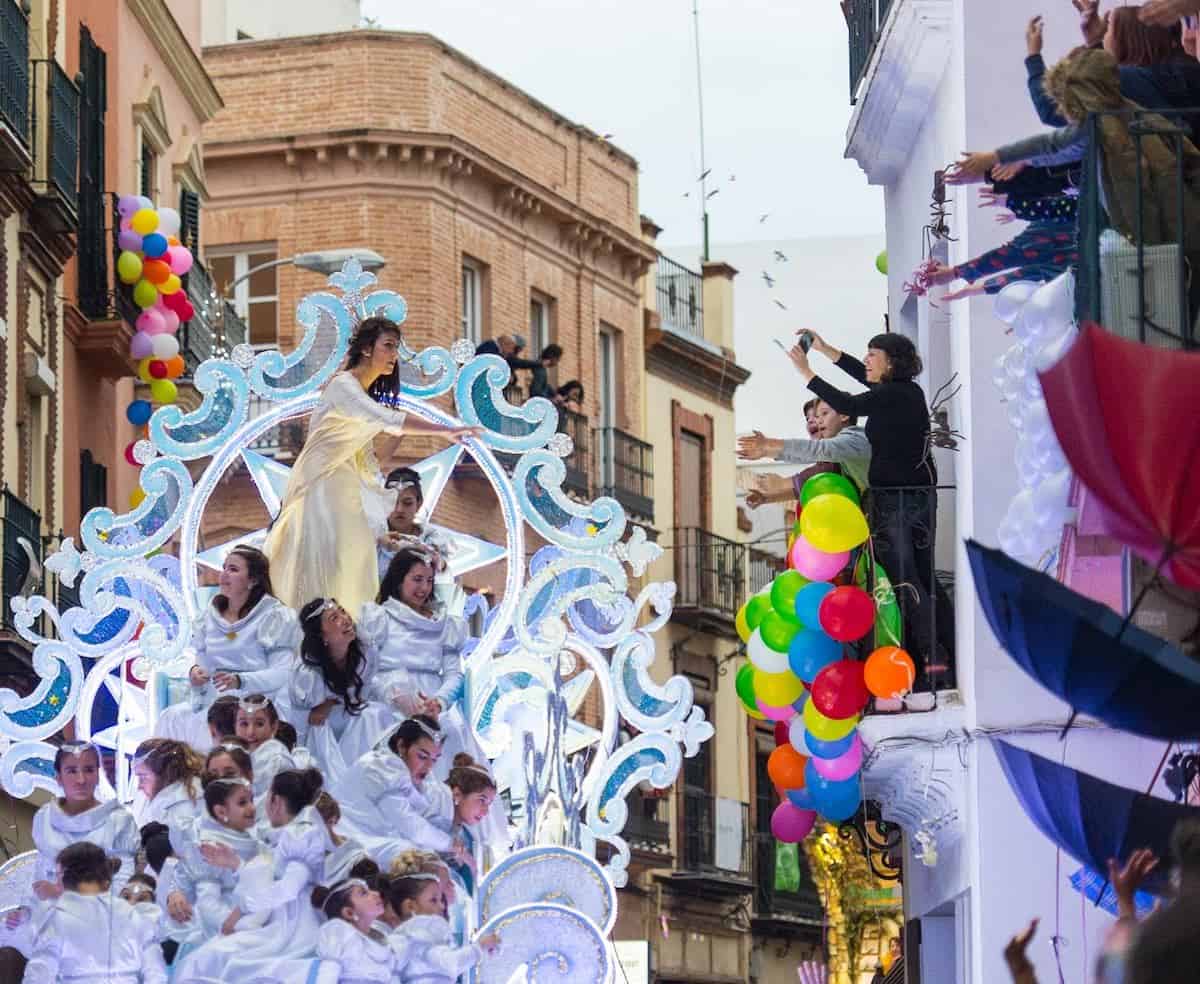
7. Festa Major de Gràcia
This eight-day festival is held every August throughout the streets of Barcelona’s Gràcia neighborhood. Over a million people descend on the area to enjoy free outdoor concerts and various family activities.
During the Festa Major, the streets are completely covered in colorful decorations and lined with little shops where you can buy souvenirs.
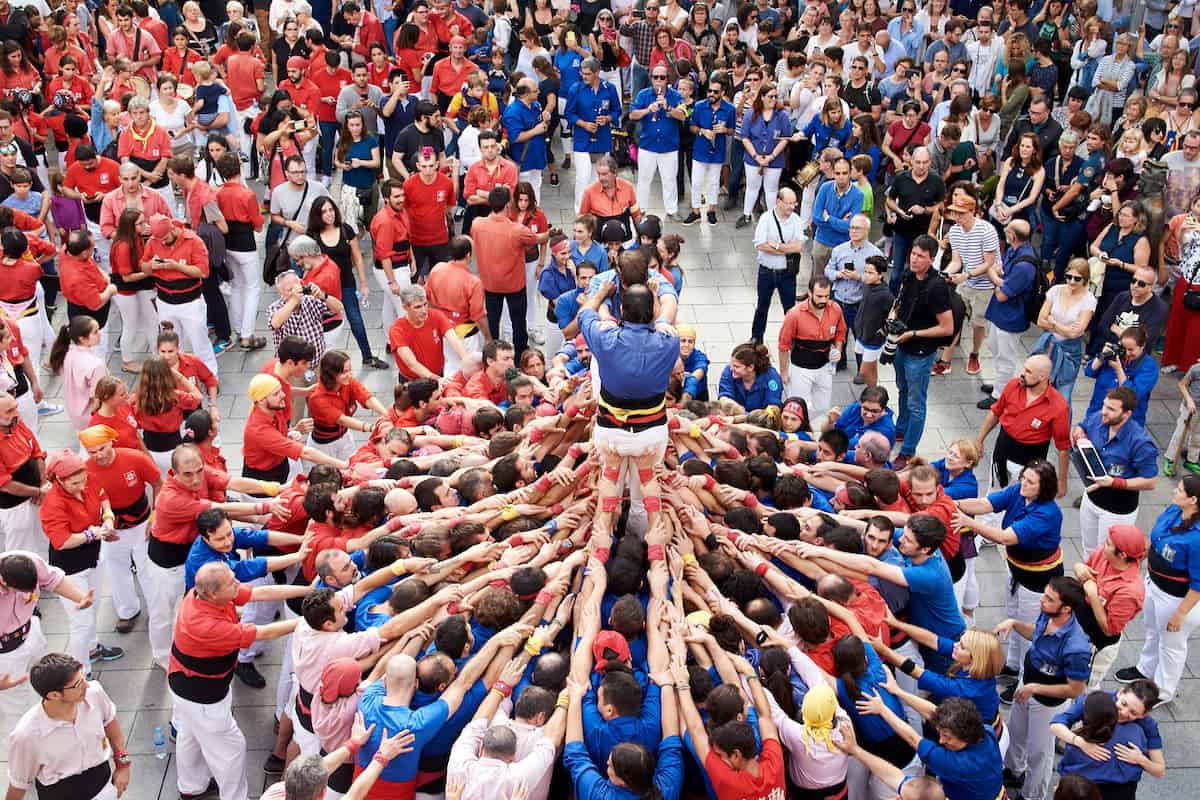
8. Els Enfarinats
As part of the Día de los Inocentes mischief on December 28th, thousands of people gather in Ibi, Alicante for the pure joy of throwing eggs and flour at one another.
Like the Tomatina festival, Els Enfarinats will leave you covered in food and bent over laughing. What could be more fun than tossing eggs and powder all over your fellow revelers?
9. La Raima
The food-throwing fun doesn’t end with La Tomatina and Els Enfarinats. Residents and visitors of La Pobla del Duc, Valencia get together every year after the grape harvest has ended to reward their hard work… by throwing grapes at each other.
If you like to get your hands a little dirty, head to this famous Spanish festival and finish out your day with wine from the previous year’s harvest!
10. Wine Battle of Haro
No list of crazy Spanish festivals would be complete without the infamous Haro Wine Battle. Haro is located in the region of La Rioja, home to the most famous wine in Spain, and every June the town erupts with wine-drinking competitions and the Batalla de Vino (Wine Battle).
At 9 a.m., everyone gathers for the procession and Mass that start the day. But the minute that Mass ends, get ready for an explosion of wine-fighting fury!
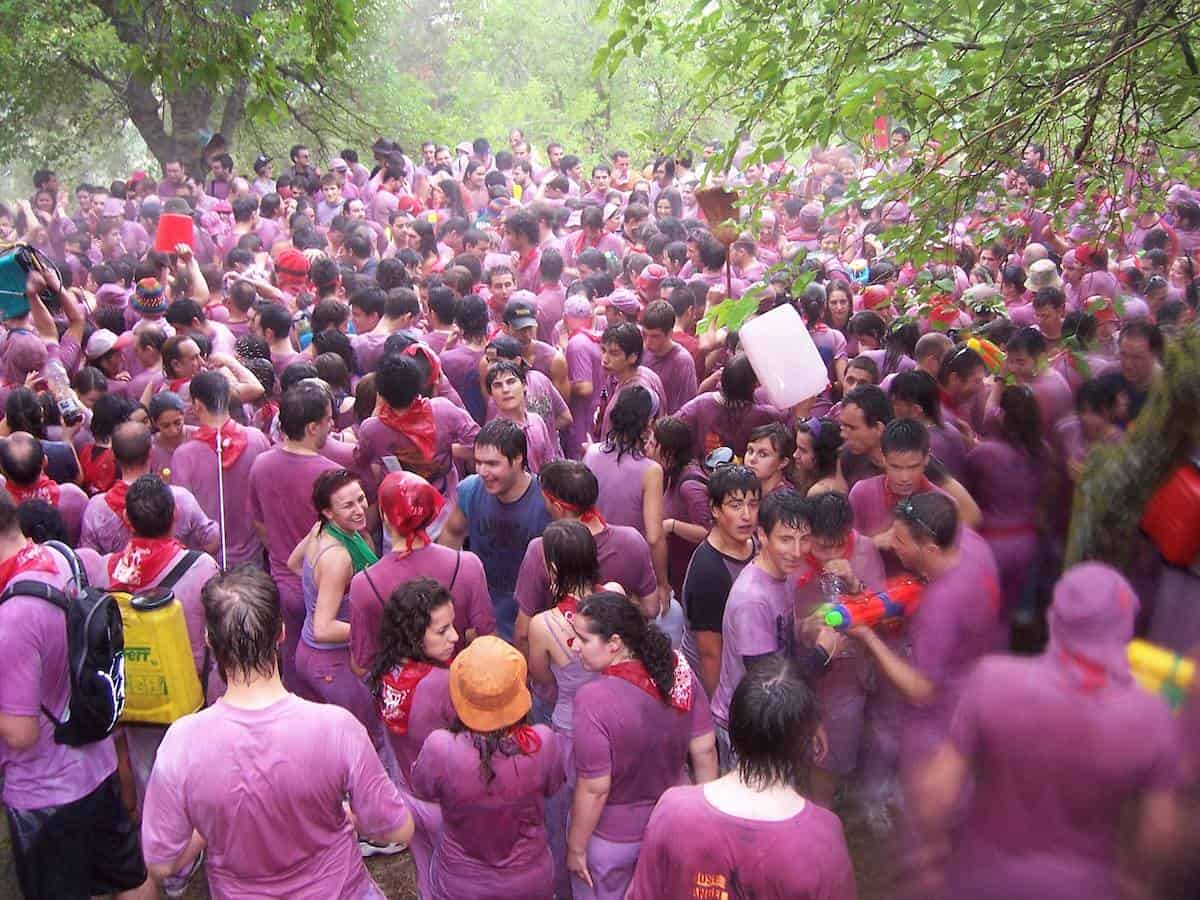
See Also: 6 Can’t-Miss Food Festivals in Spain
11. Holy Week (Semana Santa)
You don’t have to be religious to appreciate the stunning processions that parade through the streets of Spain during the week leading up to Easter.
Consisting of massive floats depicting Jesus and the Virgin Mary, dozens of hooded penitents, and a brass band or two, each Holy Week procession draws thousands of spectators who line the streets for hours as they pass by.
Holy Week is celebrated all over the country, but a few cities—Seville, Malaga, Toledo, and Valladolid among them—are especially famous for their processions. If you’re eager to see Semana Santa at its best, head to one of those cities.
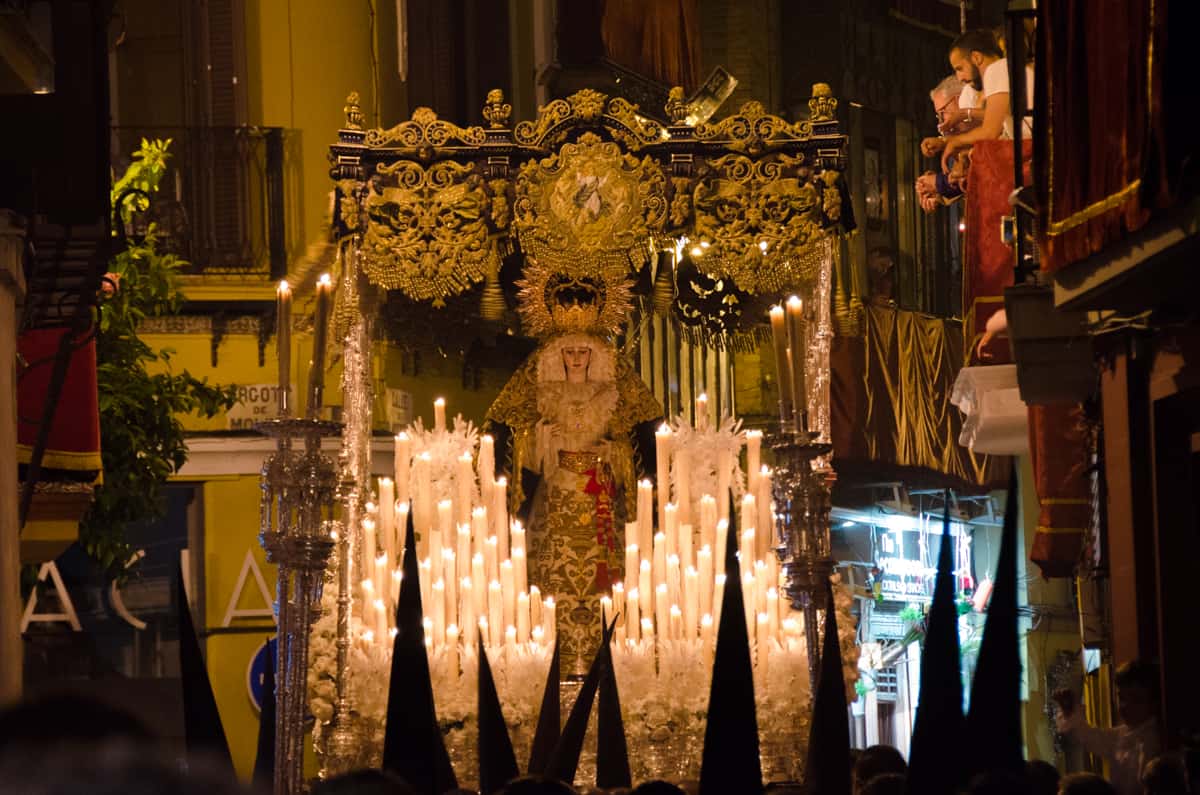
12. Córdoba Patios Festival
Springtime in Andalusia is unlike anywhere else in the world. As if the multiple local ferias and Holy Week processions weren’t enough, you won’t want to miss the colorful Patios Festival that takes place in Córdoba in early May.
The inclusion of interior courtyards, or patios, in homes in Córdoba dates back centuries to the city’s Moorish days, but the first public celebration of them wasn’t until the early 20th century.
During the festival, hundreds of people line up to step inside the elaborately decorated patios, with prizes awarded to the best and most beautiful.

13. Feria del Caballo
Seville isn’t the only city with a springtime fair worth checking out. A few weeks later, Jerez de la Frontera hosts its annual Feria del Caballo—a lesser-known yet equally enjoyable Andalusian feria (also known as the Feria de Jerez).
As the name suggests, there are plenty of beautiful horses to admire as locals in traditional dress ride through the fairgrounds. Order a pitcher of rebujito (a cocktail made with manzanilla sherry and 7UP) to share as you watch the colorful and authentic celebration come to life around you.
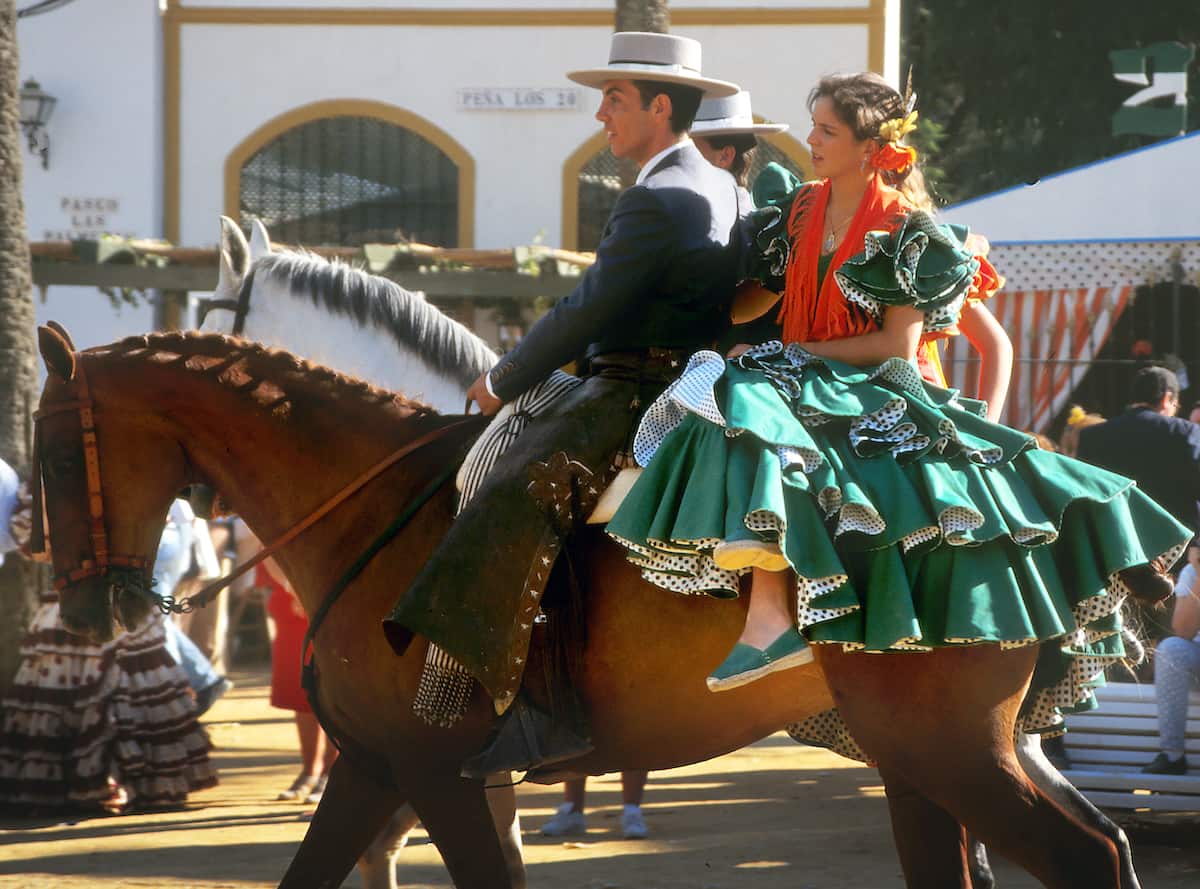
14. Malaga August Fair
Yet another noteworthy Andalusian feria, Malaga’s local fair takes place several months after most of the others, in August. That gives it an inherent bonus: you can head to the beach to relax when you need a break from the fair!
What makes Malaga’s fair especially great is that much of it takes place in the city center during the daytime. At night, the festivities move to the fairgrounds, which are still easily accessible on public transportation.
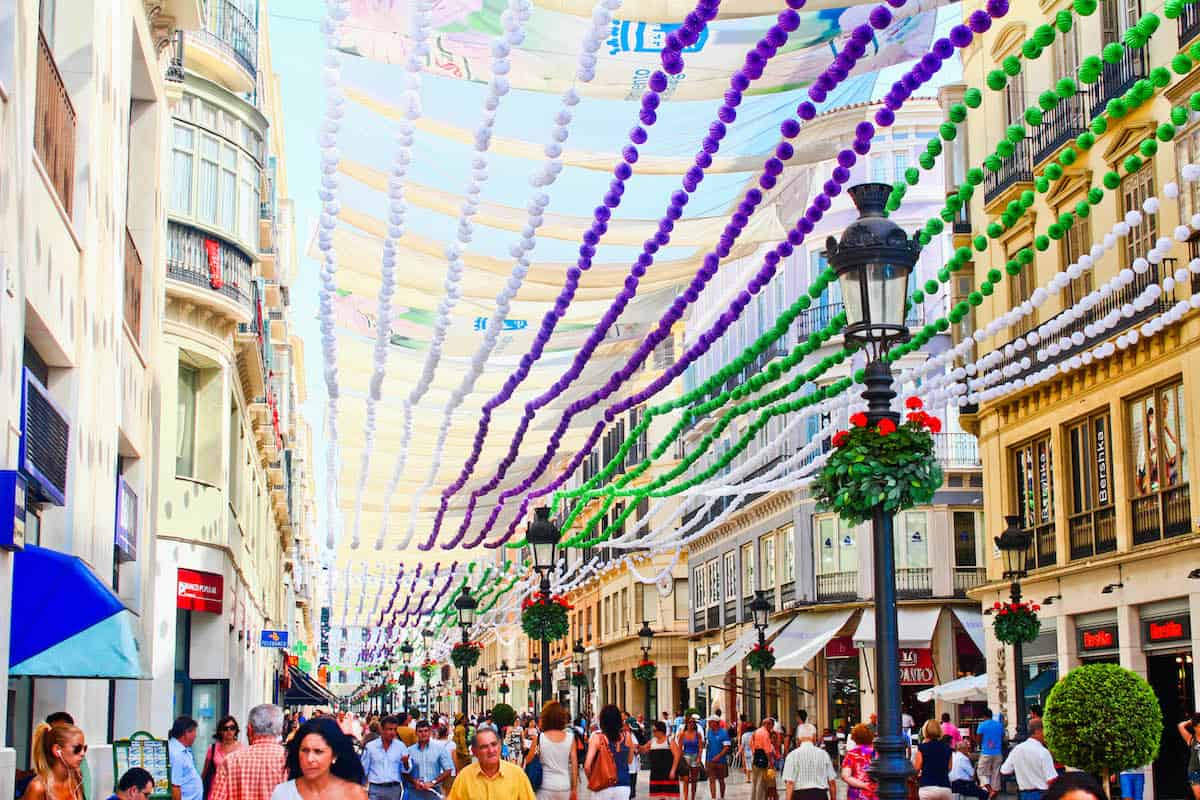
15. Noche de San Juan
Is there any better way to kick off summer than with bonfires and fireworks on the beach?
That’s exactly how many coastal cities in Spain ring in the warmest months of the year. On the night of June 23rd—the eve of the feast of St. John the Baptist—locals in cities such as Barcelona, Alicante, Almeria, and more head to the beach for an evening of celebrations.
The festivities look a bit different in each city, but in general you can expect lots of fire, abundant food and drinks from nearby chiringuitos, and maybe even a midnight swim at one of the first Spanish festivals of the summer.
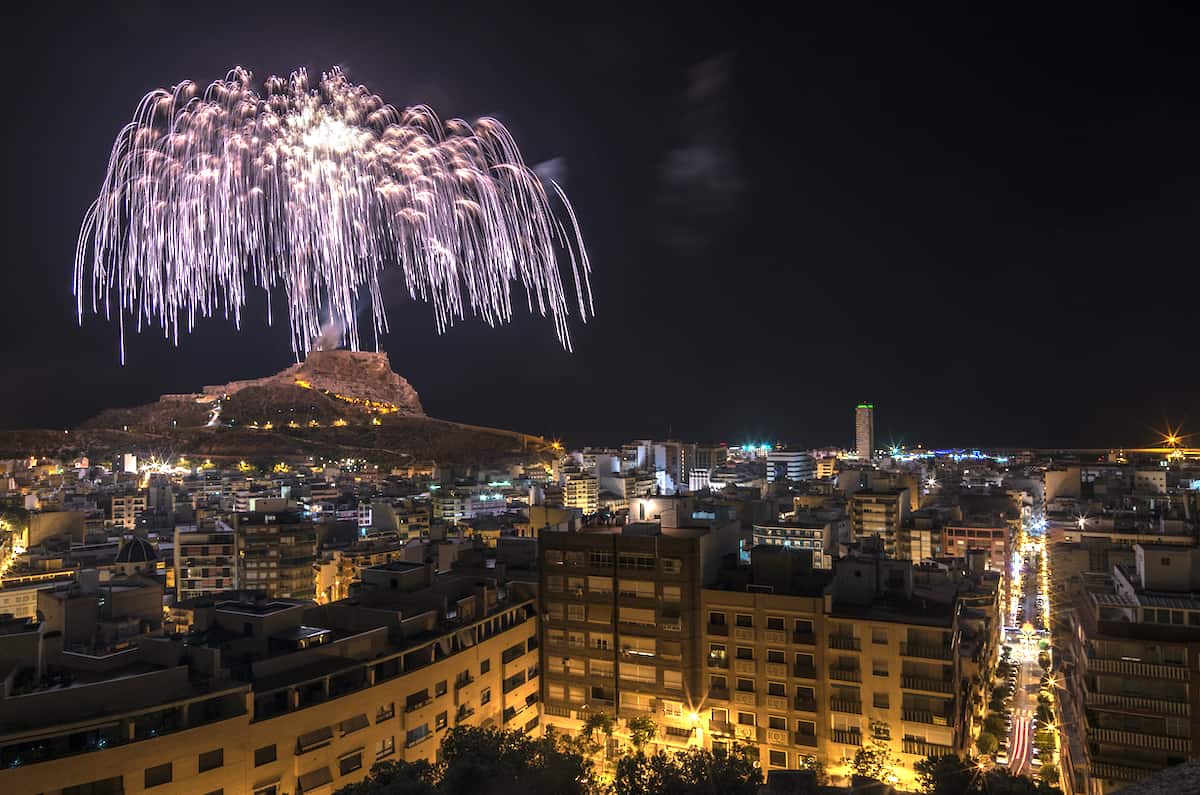
16. Semana Grande
Semana Grande literally translates to “big week” or “great week,” and there couldn’t be a more fitting name for this week of festivities in San Sebastian and Bilbao.
A celebration of the Basque Country’s one-of-a-kind culture, this festival includes concerts, traditional Basque sporting events, and an international fireworks competition.
It takes place in mid-August every year—so if you’re still not convinced to spend part of your summer up north, this is a pretty good reason!
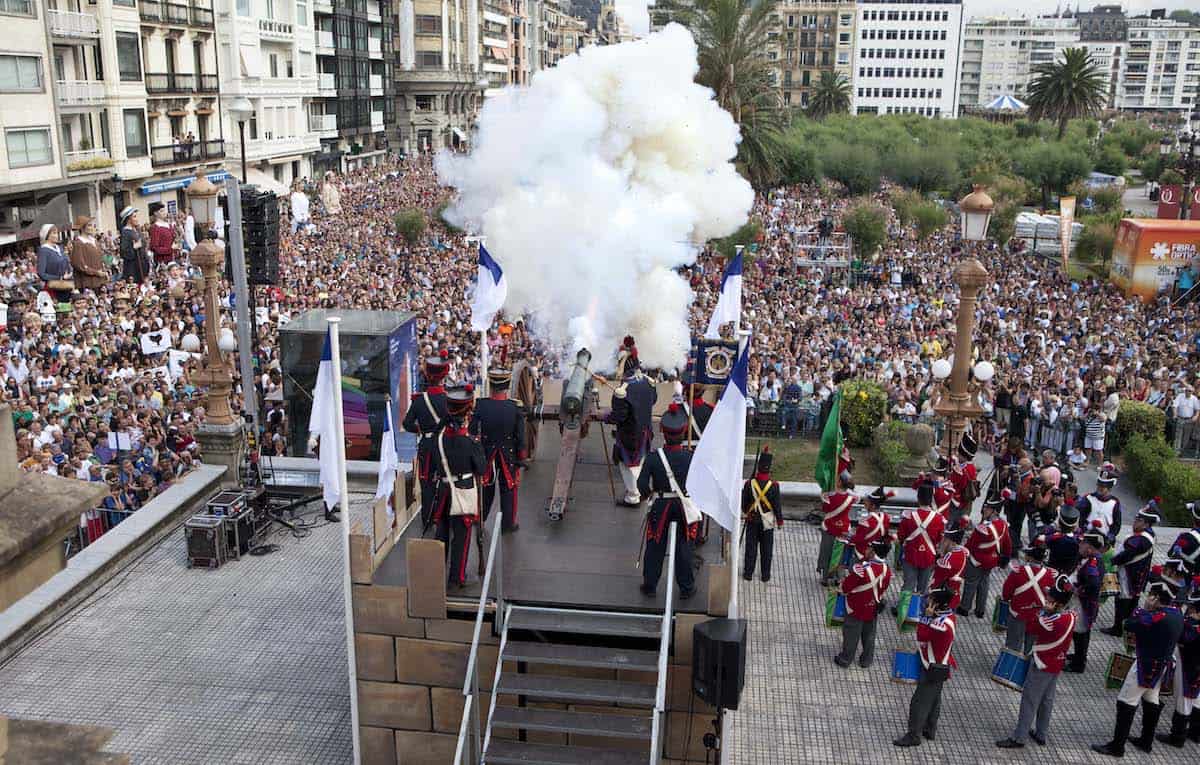
17. Tamborrada
Another emblematic Basque festival is San Sebastian’s Tamborrada, a 24-hour drum festival celebrating the feast day of the city’s patron saint.
Every January 20th, dozens of local drum troupes play their way through the streets. Expect lots of music, dancing, and traditional Basque food at this vibrant celebration.
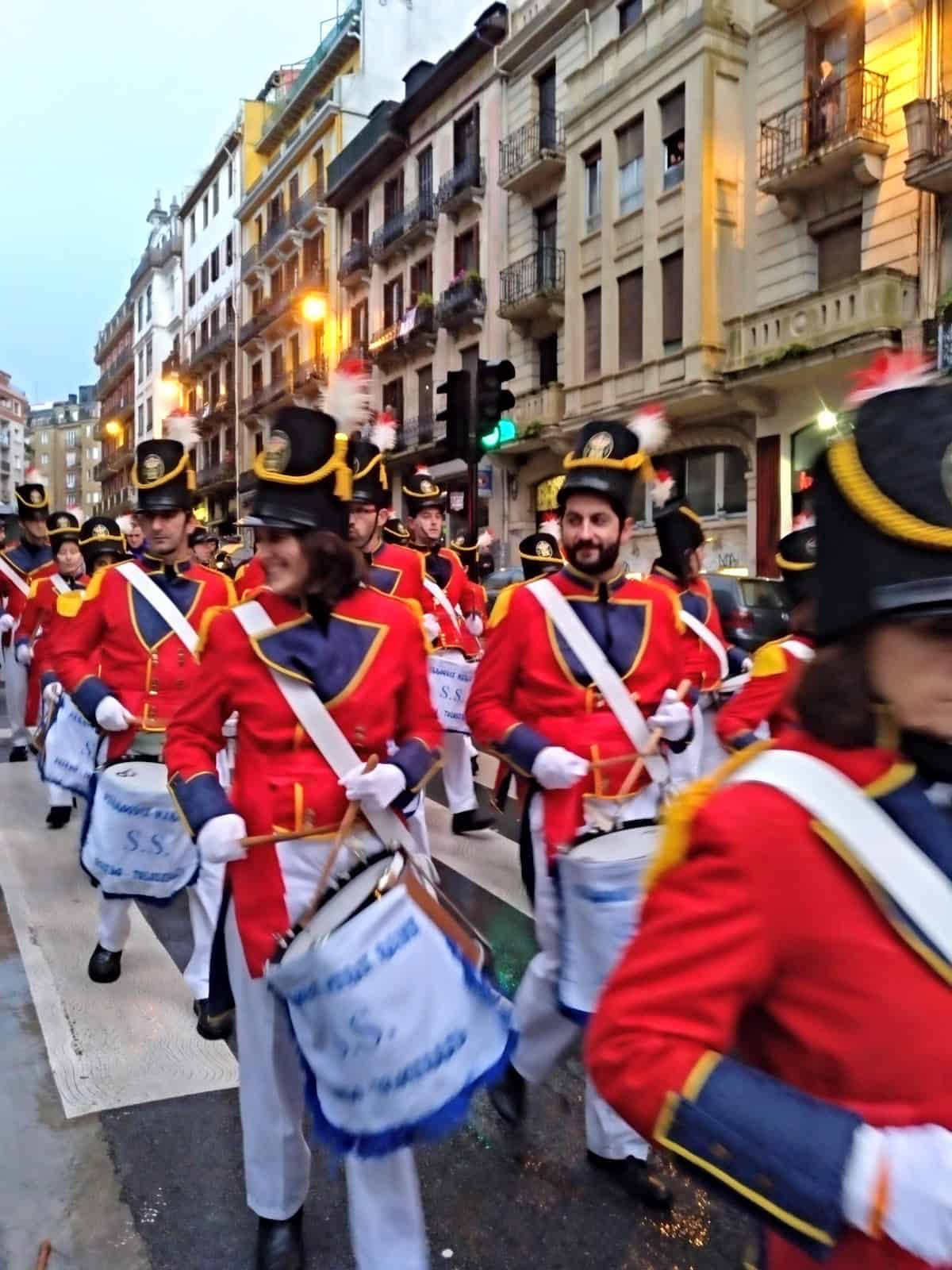
18. El Colacho
The town of Castrillo de Murcia has an unconventional way of welcoming babies born the previous year into the world: by jumping over them!
The El Colacho celebration, which takes place in mid-June, dates back to the 17th century and is meant to be a sort of baptism. Men dressed in costumes representing the devil tear through the village streets before leaping over the babies, who have been laid out on a mattress.
Afterward, the babies are sprinkled with rose petals and returned to their parents, having effectively been protected from evil by the unorthodox ritual.
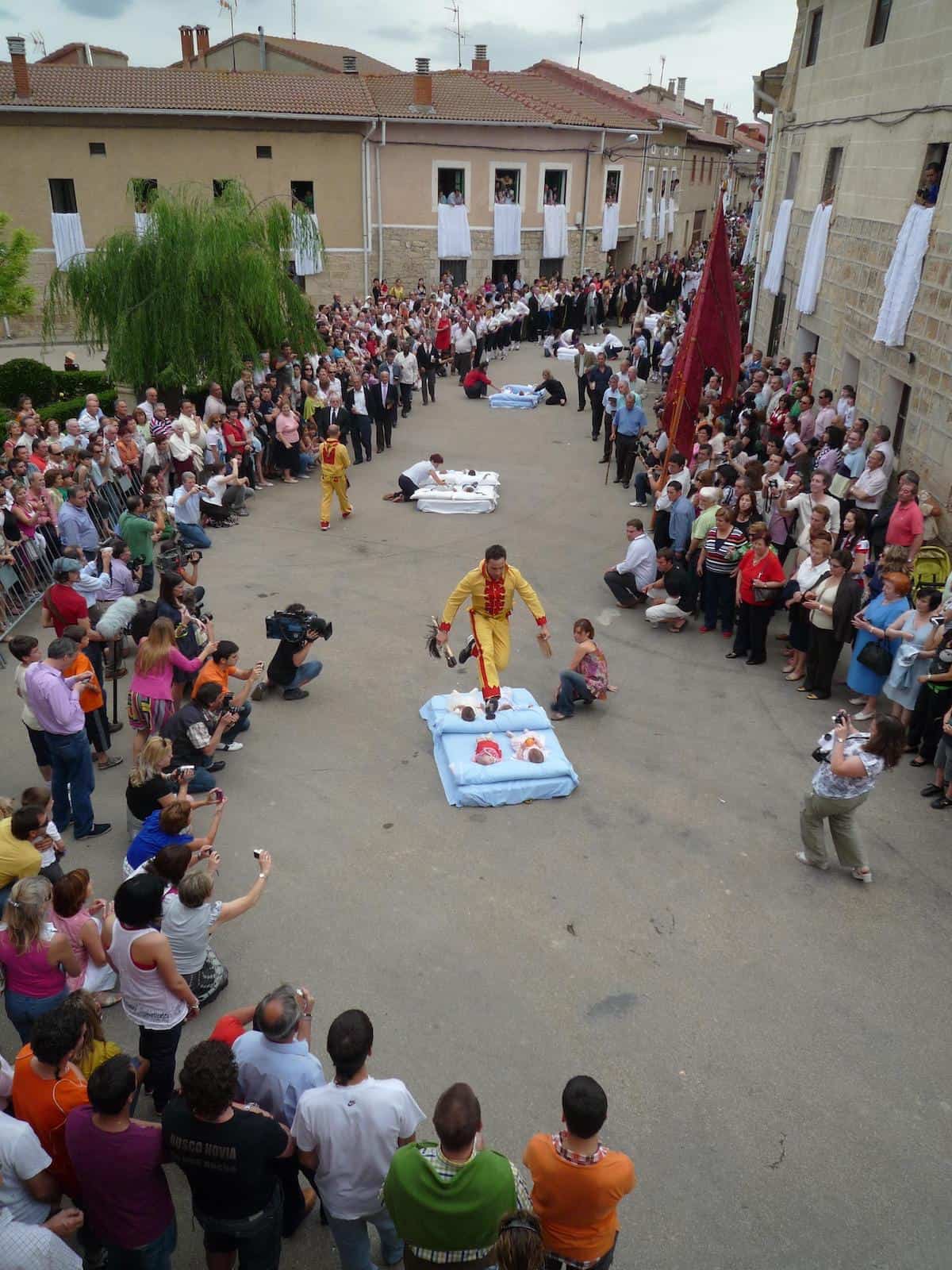
19. Sant Jordi Festival
Forget Valentine’s Day—in Catalonia, love is celebrated during the festival of Sant Jordi! On April 23rd—the feast of St. George, or Sant Jordi in Catalan—stalls selling books and roses line the streets in cities and towns throughout the region.
Traditionally, men gave women roses and women gave men books, but today the norms are a bit more relaxed. No matter who gives and receives which gifts, this celebration of love and literature is one of the most special Spanish festivals.
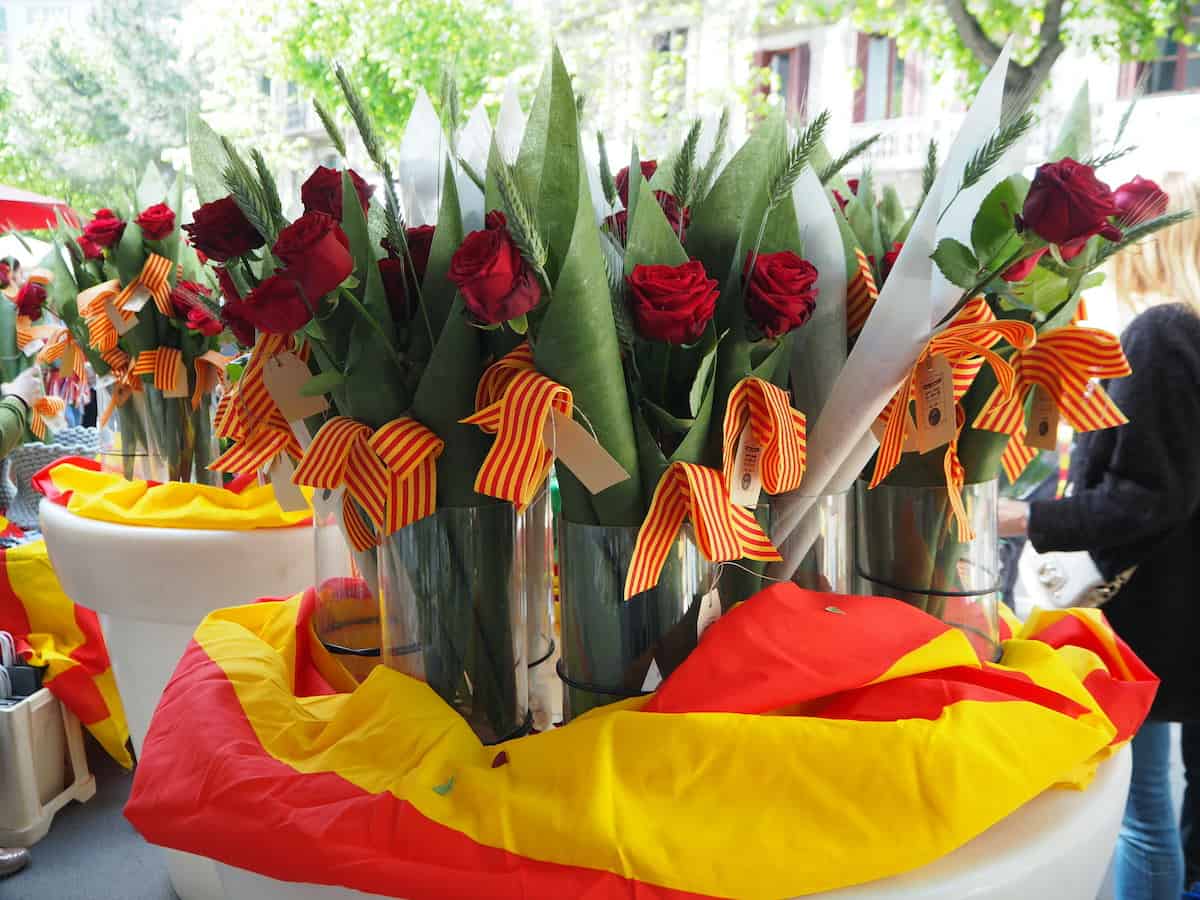
20. San Isidro
May 15th is one of the most important days on Madrid’s calendar; it marks the feast day of San Isidro. The city celebrates with a colorful multi-day festival that perfectly bridges the classic and the contemporary.
At this Spanish festival, locals dress in traditional costumes and dance the chotis, a typical dance from Madrid. Live music performances and activities for all ages contribute to the festive atmosphere.
Don’t forget to try the rosquillas—it wouldn’t be San Isidro without these delicious donut-shaped cookies!
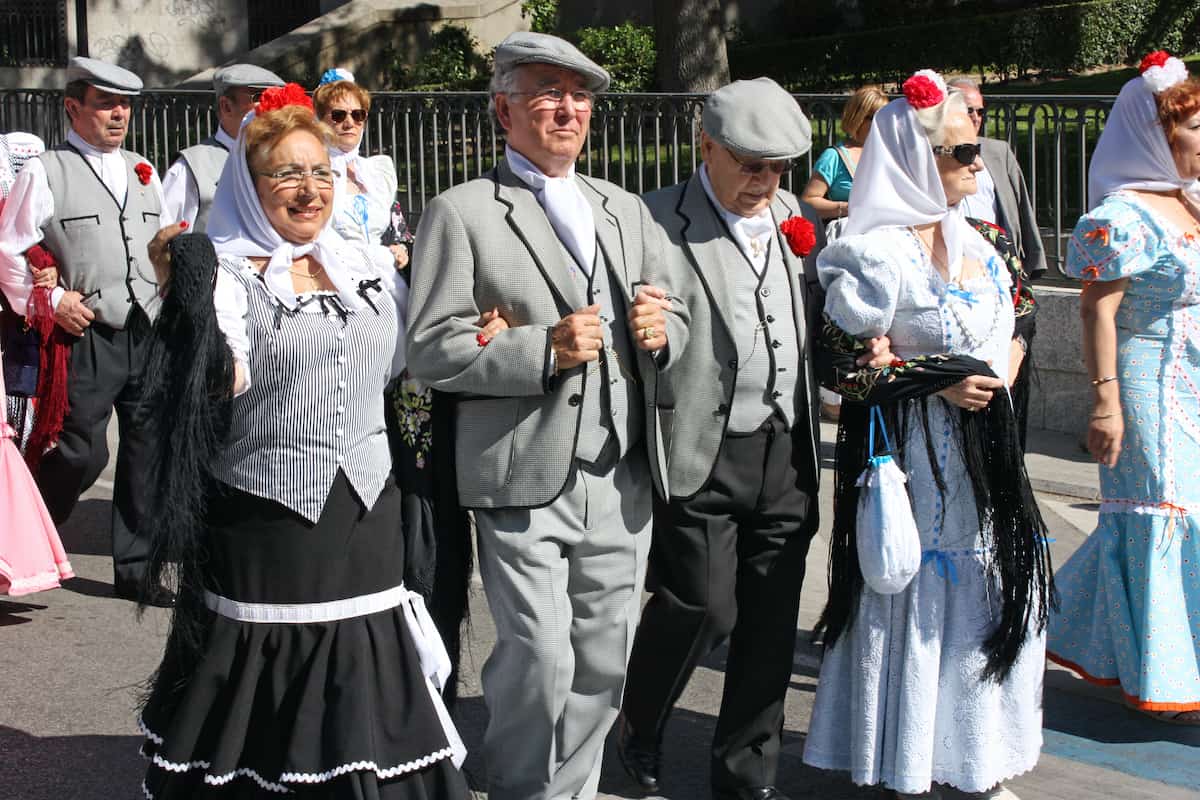
21. Jerez International Flamenco Festival
Flamenco has its roots in Andalusia, and Jerez is one of the best places to experience this iconic art form. Every year in late February and early March, flamenco professionals from across the world descend on the city to teach and perform at the International Flamenco Festival.
If you want to take your love of flamenco to the next level, this is one of the best Spanish festivals out there. Over the course of several weeks, you’ll have the chance to experience concerts, impromptu performances, workshops, and classes led by the biggest names in the flamenco game.
It’s about so much more than just watching a show—at this celebration, you’ll be fully immersed in the world of flamenco.
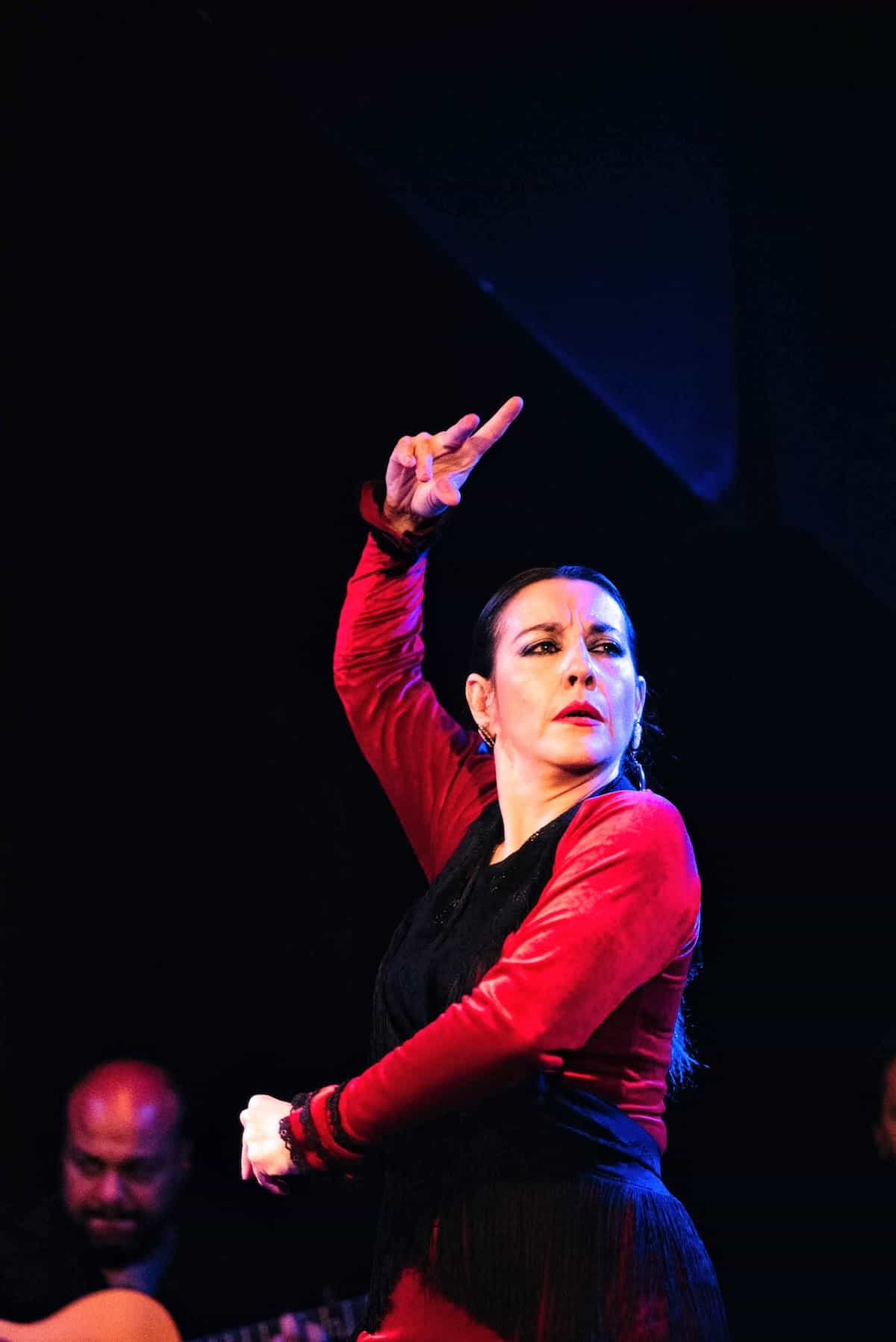
22. Near Death Festival
The official name for this quirky Spanish event is the Fiesta de Santa Marta de Ribarteme—but that just doesn’t have the same ring to it.
The Near Death Festival takes place in a small Galician town every year in late July. On that day, people who have had near-death experiences in the past year come from near and far to be paraded through the village in coffins carried by their loved ones.
Though it’s definitely one of the more unique Spanish festivals, at the end of the day, it’s a way to celebrate life. And of course, since so many Spanish and Galician festivals are centered around food, there’s plenty of pulpo (octopus) to go around.
23. San Sebastian Film Festival
For nearly 70 years, film buffs and industry professionals have descended upon the Basque Country every September to take part in the famous San Sebastian Film Festival.
With nearly a dozen categories selected to showcase a diverse array of films and creators from across the world, the festival is a celebration of talent from all walks of life. Come for the world-class films; stay for the insightful panels and discussions led by many of the participants.
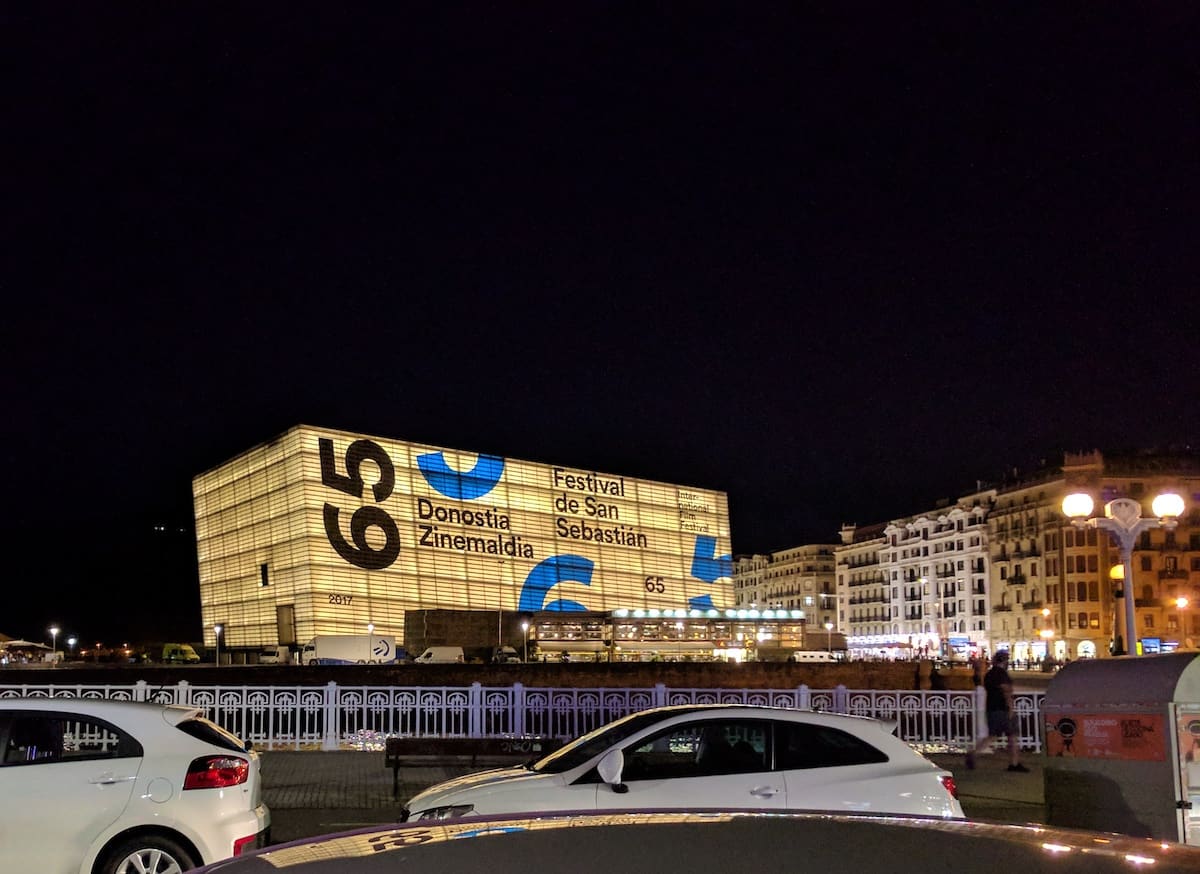
24. La Mercè
The biggest street party in Barcelona takes place in late September in commemoration of La Mercè, the local patron saint. It’s a colorful and vibrant multi-day party marking the end of summer and welcoming fall—all while celebrating the best of Catalan culture.
La Mercè is full of jaw-dropping spectacles you have to see to believe: giants parading through the streets, gravity-defying human towers, and the correfoc (“fire run”) that illuminates the streets.
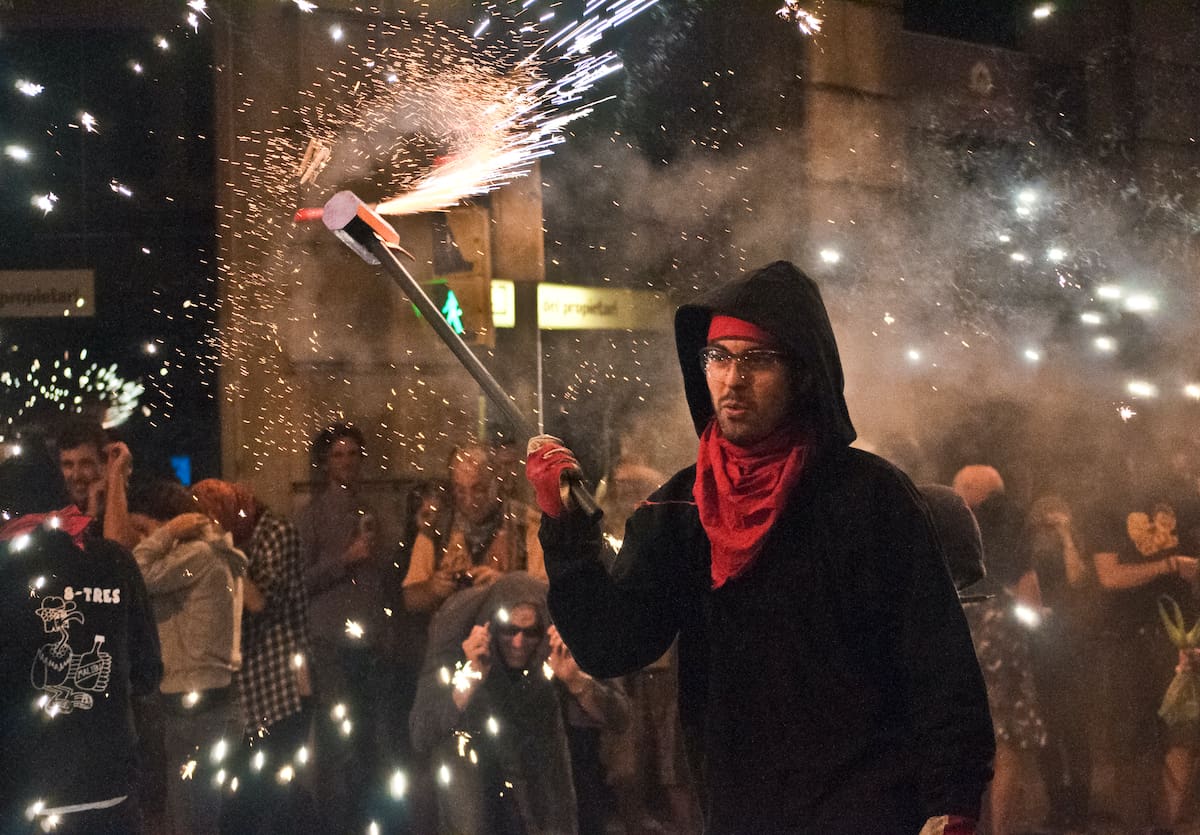
25. Día de la Hispanidad
Many traditional Spanish festivals are incredibly regional, but not Día de la Hispanidad. Even if you don’t speak Spanish, you may have guessed from the name that this is a day to celebrate all things Spanish—and as a result, it’s the most important national holiday.
Día de la Hispanidad is celebrated across the country on October 12th. The main celebration takes place in Madrid, complete with a military parade and a flyover by the Spanish Air Force.
Elsewhere in the country, the festivities tend to be more low-key, but Spaniards still take advantage of the holiday to celebrate with family and friends (and plenty of Spanish food).
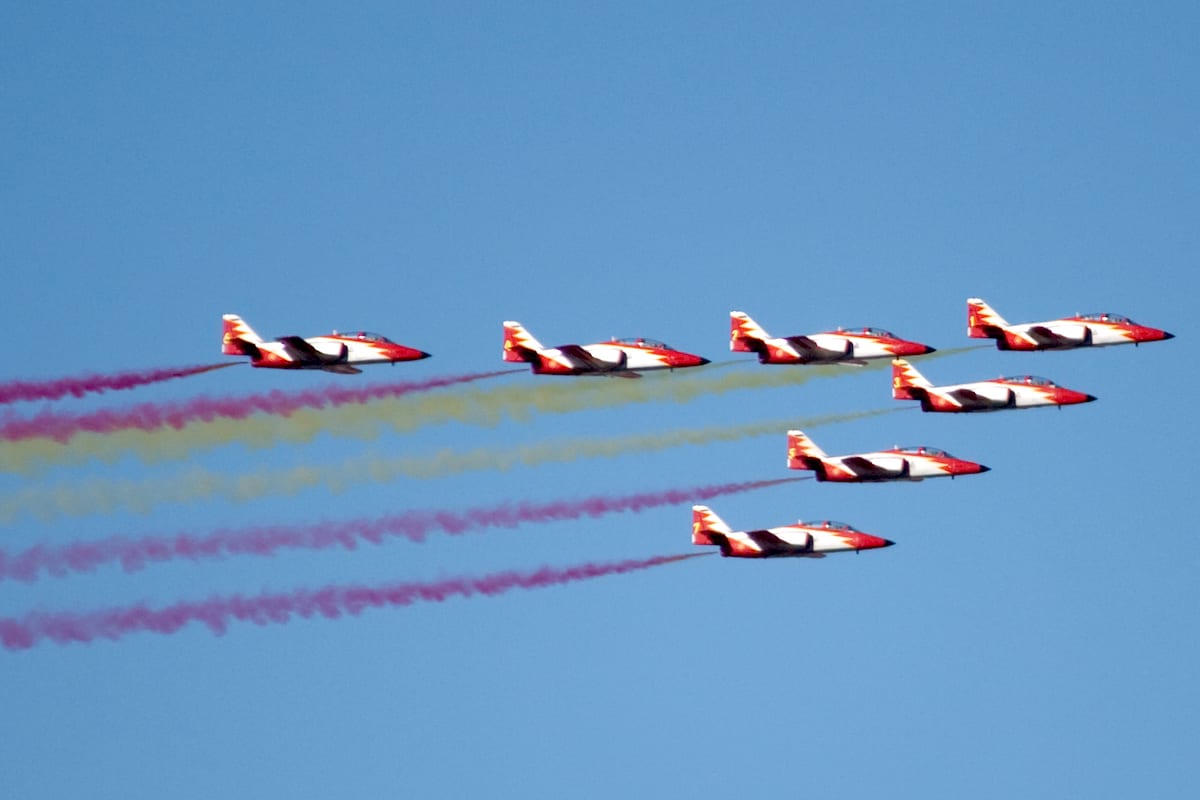
26. All Saints’ Day
Halloween may be a relatively new concept in Spain, but All Saints’ Day is definitely not. November 1st is a day for Spanish families to pay tribute to their lost loved ones. Many do so by visiting cemeteries to lay flowers on their graves.
While solemn, this Spanish festival is a day to connect with family and friends, and eat lots of delicious holiday food as well. Roasted chestnuts and sweet potatoes are classic snacks on All Saints’ Day. And in Catalonia, locals typically enjoy panellets (small marzipan-based treats).
27. Día de los Santos Inocentes
Rounding out our list of traditional Spanish festivals is one that’s rooted in jokes and good fun. El Día de los Santos Inocentes (Holy Innocents’ Day) is Spain’s answer to April Fools’ Day (though it takes place on December 28th instead of April 1st).
Family and friends spend the day playing practical jokes on each other, adding yet another festive date to the Spanish holiday season.
Spanish Festivals FAQs
Many of the most important Spanish festivals are actually closely tied to a specific region! The main national holidays are Three Kings Day on January 6th and Día de la Hispanidad on October 12th. Christmas, New Year’s, and Holy Week are also important across the country.
Fiesta literally means “party” in Spanish. Many Spanish festivals’ names include this word to indicate that they’re celebrations—so in practice it can either refer to a party in general, or an actual holiday.
There are a total of 14 public holidays in Spain. Eight of them are national holidays, two are regional, and two are local (meaning these last four vary depending on where you are in Spain). However, there are also other celebrations that aren’t official public holidays!
Love Spanish food? Sign up for my free weekly newsletter and receive a new Spanish recipe once a week! Join today and get my FREE Spanish ingredient essentials guide!
[ad_2]
Source link
